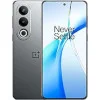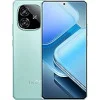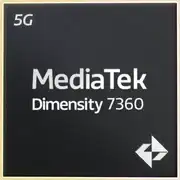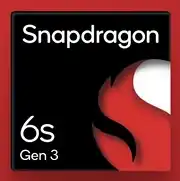Qualcomm Snapdragon 7 Gen 3

Qualcomm Snapdragon 7 Gen 3: A Balance of Power and Efficiency in 2025 Smartphones
April 2025
Modern mobile processors are the heart of smartphones, defining their capabilities. The Qualcomm Snapdragon 7 Gen 3, introduced in late 2024, has become the company's answer to market demands: high performance, energy efficiency, and an affordable price. In this article, we will explore how this chip is structured, what it is capable of, and who should pay attention to it.
1. Architecture and Process Technology: 4 nm, 8 Cores, and Adreno 720
The Snapdragon 7 Gen 3 is built on a 4-nanometer process technology, ensuring low power consumption (TDP — 6 W) and high transistor density. At its core is a hybrid architecture consisting of eight cores:
- 1× Cortex-A715 (up to 2.63 GHz) — for resource-intensive tasks;
- 3× Cortex-A715 (up to 2.4 GHz) — a balance between performance and efficiency;
- 4× Cortex-A510 (up to 1.8 GHz) — for background processes and battery savings.
This approach allows for load distribution depending on the usage scenario. For example, when a game is launched, the powerful cores are activated, while energy-efficient ones handle social media browsing.
The graphics subsystem Adreno 720 supports Vulkan 1.3, OpenGL ES 3.2, and DirectX 12 APIs. It is optimized for gaming at resolutions up to QHD+ (1440p) and refresh rates of 120 Hz. Additionally, the GPU accelerates video processing and works with AI algorithms, such as in shooting modes.
2. Performance in Real-World Tasks: From Gaming to AI
Gaming:
The Snapdragon 7 Gen 3 handles most top-chart projects from Google Play. For example:
- Genshin Impact — stable 50–55 FPS on medium settings;
- Call of Duty: Mobile — 60 FPS in HD+ with high textures;
- Supersampling mode (upscaling to 2K) is available for less demanding games.
The thermal package of smartphones using this chip typically includes vapor chambers and graphene coatings, keeping the temperature within 40–43°C even during extended sessions.
Multimedia:
The chip supports decoding 8K@30fps video and HDR10+/Dolby Vision. This makes it an excellent choice for streaming and editing short videos. The built-in DSP (digital signal processor) enhances sound quality in headphones with ANC and speakers.
AI Applications:
Artificial intelligence is utilized in scenarios such as:
- Photography: skin retouching, scene recognition, video stabilization;
- Voice assistants: background speech analysis with no delays;
- Battery optimization: predicting app usage to extend autonomy.
Power Consumption:
With a TDP of 6 W, smartphones with the Snapdragon 7 Gen 3 demonstrate 12–14 hours of active use (web surfing, videos, social media) and up to 2 days in standby mode. In gaming, a 5000 mAh battery drains in 5–6 hours.
3. Integrated Modules: 5G, Wi-Fi 7, and Satellite Navigation
- Snapdragon X63 5G modem: Supports Sub-6 GHz and mmWave, with speeds up to 5 Gbps (theoretically). In real-world conditions — 1.2–1.5 Gbps in 5G networks.
- Wi-Fi 7 and Bluetooth 5.4: Bandwidth up to 5.8 Gbps, low latency for streaming and gaming. Bluetooth supports LE Audio and simultaneous connections to multiple devices.
- Navigation: GPS, GLONASS, Galileo, BeiDou, and QZSS. Positioning accuracy — up to 1 meter in urban areas.
An interesting feature is compatibility with Snapdragon Satellite, allowing emergency messages to be sent via Iridium satellites. This is useful for hiking or during emergencies.
4. Comparison with Competitors: Where Does Snapdragon 7 Gen 3 Excel?
- MediaTek Dimensity 8300: Similar performance in Geekbench 6 (Single-Core — 1120, Multi-Core — 3280), but worse optimization for gaming. It is cheaper — smartphones on Dimensity 8300 start at $350.
- Snapdragon 7 Gen 2: The previous generation lags behind in energy efficiency (5 nm process) and GPU speed (by 15–20%).
- Apple A16 Bionic: Leader in Single-Core (1580 points), but Multi-Core — 3150. However, iOS devices with A16 start at $700, which is 30–40% more expensive than those on Snapdragon 7 Gen 3.
In synthetic benchmarks, in AnTuTu 10, the chip scores around ~856,000 points, surpassing Dimensity 8200 (790,000) and approaching Snapdragon 8 Gen 2 (1.1 million).
5. Use Cases: Who Is This Processor Suitable For?
- Gaming: For mobile gaming enthusiasts not willing to pay for flagships. Ideal for Fortnite, PUBG Mobile, but not for Cloud-based Cyberpunk 2077.
- Everyday Tasks: Smooth operation with 10–15 apps in the background, quick loading of social media and browsers.
- Photo and Video: Support for cameras up to 200 MP, 4K@60fps recording with HDR. Night and Portrait modes operate nearly at the level of top models.
Example devices:
- Xiaomi Redmi Note 13 Pro+ ($499): 6.7" AMOLED, 200 MP camera;
- realme 11X 5G ($429): 5000 mAh, 67 W charging;
- Motorola Edge 40 Neo ($479): IP68, stylus included.
6. Pros and Cons of the Processor
Strengths:
- Excellent energy efficiency;
- Support for current communication standards (5G, Wi-Fi 7);
- Good performance reserve for future Android updates.
Weaknesses:
- Not suitable for 4K gaming and professional video editing;
- Lack of hardware ray tracing support in the GPU;
- Limited compatibility with premium accessories (e.g., AR glasses).
7. Practical Tips: How to Choose a Smartphone with Snapdragon 7 Gen 3?
1. Cooling: Look for models with liquid cooling or large heat sinks.
2. RAM: A minimum of 8 GB LPDDR5 for multitasking.
3. Display: AMOLED with a refresh rate of 90–120 Hz for smooth animations.
4. Price: The optimal price range is $400–600. Cheaper options may have cut-back cameras or materials.
Devices using this chip are most often mid-range smartphones focused on battery life and cameras. They are chosen by students, travelers, and those who do not want to overpay for "flagship" features.
8. Final Conclusion: Who Is Snapdragon 7 Gen 3 Suitable For?
This processor is designed for those seeking a balance between price and quality. It is suitable for:
- Casual Gamers, who do not require maximum settings;
- Active Users, valuing long battery life;
- Content Creators, shooting videos for social media.
The main benefits are smooth operation in any scenario, support for new 5G networks, and readiness for future software updates. If you are not ready to spend $800+ on a smartphone but want modern technology, the Snapdragon 7 Gen 3 is one of the best options for Spring 2025.
Prices in this article are accurate as of April 2025. Devices are available at retail in the USA, Europe, and Asia.
Basic
3x 2.4 GHz – Cortex-A715
4x 1.8 GHz – Cortex-A510
GPU Specifications
Connectivity
Memory Specifications
Miscellaneous
Benchmarks
Phones with Snapdragon 7 Gen 3











Comparison of Devices with Snapdragon 7 Gen 3
Compared to Other SoC
Related SoC Comparisons
Share in social media
Or Link To Us
<a href="https://cputronic.com/en/soc/qualcomm-snapdragon-7-gen-3" target="_blank">Qualcomm Snapdragon 7 Gen 3</a>





